Embarking on a road trip is an exciting adventure, offering the freedom to explore new places and create lasting memories. However, the open road can also present unexpected challenges, from minor inconveniences to more serious emergencies. Being well-prepared with a comprehensive road trip emergency kit is crucial for ensuring your safety and peace of mind. This article will guide you through the essential items you should always have in your car, drawing insights from experienced travelers and preparedness experts.
Why You Need a Road Trip Emergency Kit
A road trip emergency kit is more than just a collection of random items; it’s a carefully curated assortment of tools and supplies designed to help you handle various unforeseen situations. Whether it’s a flat tire, a minor injury, severe weather conditions, or even getting stranded, having the right kit can make all the difference. It allows you to address minor issues yourself, provide first aid, signal for help, and stay safe and comfortable until assistance arrives.
Essential Components of Your Road Trip Emergency Kit
A well-rounded road trip emergency kit should address different types of emergencies. Based on expert recommendations, here are the key categories and items you should include:
1. First-Aid Kit
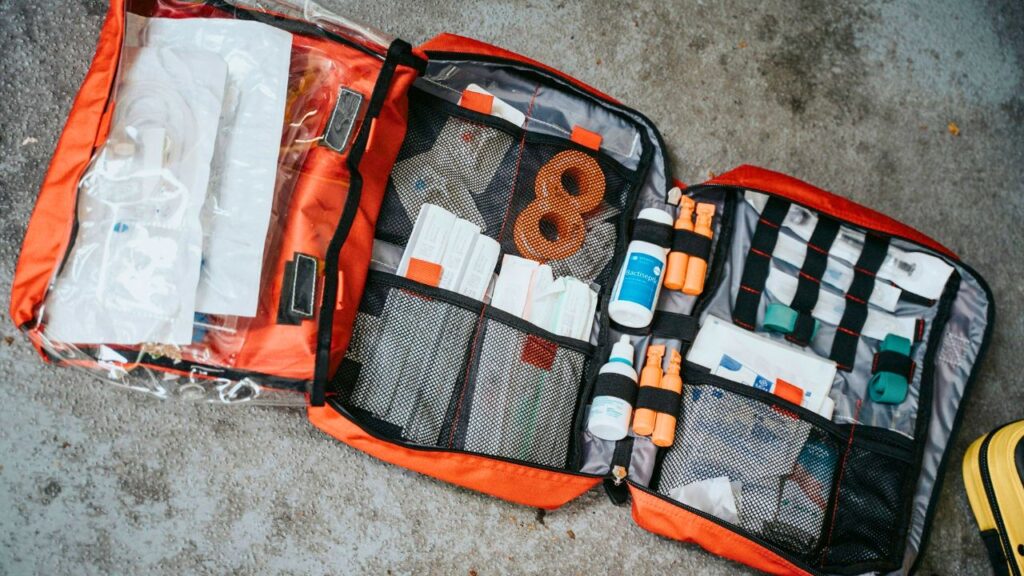
A comprehensive first-aid kit is arguably the most critical component of your emergency kit. It should be easily accessible and contain a variety of supplies to treat minor injuries.
Essential First-Aid Supplies:
| Item | Quantity | Notes |
| Adhesive bandages | Assorted | Different sizes for various cuts and scrapes |
| Sterile gauze pads | Multiple | For covering and cleaning wounds |
| Medical tape | 1 roll | To secure bandages and dressings |
| Antiseptic wipes | Several | To clean wounds and prevent infection |
| Antibiotic ointment | Several | To prevent infection in minor cuts and scrapes |
| Pain relievers | Small pack | Over-the-counter pain relievers like ibuprofen or acetaminophen |
| Antihistamines | Small pack | For allergic reactions |
| Tweezers | 1 | To remove splinters or debris |
| Scissors | 1 | Small pair for cutting tape or bandages |
| Instant cold pack | 1 or 2 | For sprains, strains, or swelling |
| Disposable gloves | Several pairs | To protect yourself and the injured person from contamination |
| CPR breathing barrier | 1 | For performing CPR safely |
| First-aid manual/guide | 1 | To provide instructions on how to treat different injuries |
Consider adding personal medications, such as prescription drugs or an epinephrine auto-injector (if prescribed), to your first-aid kit.
2. Tools and Repair Items
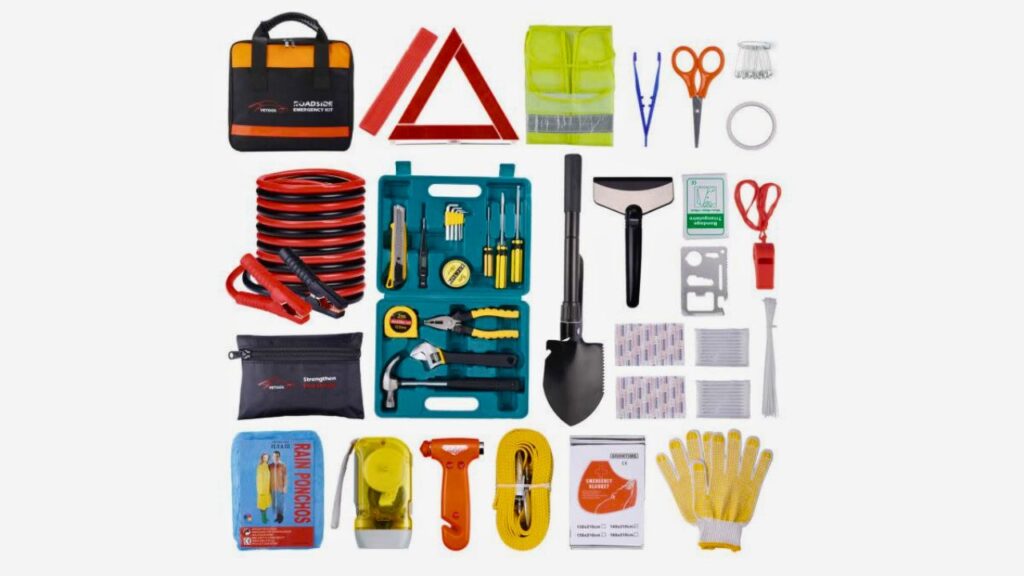
Vehicle breakdowns are a common occurrence on road trips. Having basic tools and repair items can help you address minor issues and potentially get back on the road.
Essential Tools and Repair Items:
- Jumper Cables: For jump-starting your car if the battery dies.
- Tire Pressure Gauge: To ensure your tires are properly inflated.
- Spare Tire: Make sure it’s properly inflated and in good condition.
- Tire Iron and Jack: To change a flat tire. Ensure you know how to use them.
- Basic Toolkit: Including a screwdriver set (Phillips and flathead), pliers, and an adjustable wrench.
- Duct Tape: For temporary repairs. Its uses are virtually limitless.
- Multi-tool or Pocket Knife: A versatile tool for various tasks.
- Can of Aerosol Tire Sealant: As a temporary fix for minor tire punctures.
- Spare Fuses: Check your car’s manual to know the types and sizes you need.
- Tow Strap or Rope: For getting your vehicle towed if necessary.
Depending on the age and condition of your vehicle, you might consider adding other specific tools or fluids like coolant.
3. Communication and Signaling Devices
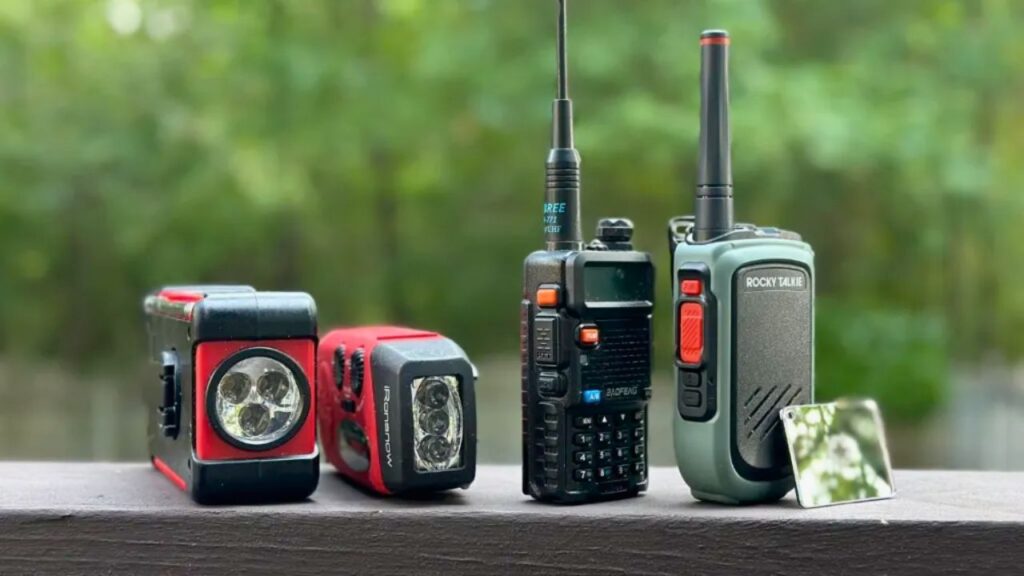
In an emergency, being able to communicate and signal for help is crucial.
Essential Communication and Signaling Devices:
- Cell Phone and Charger: Ensure your phone is charged before you leave and bring a car charger or portable power bank.
- Whistle: For signaling for help. It’s more effective than shouting over long distances.
- Flashlight: With extra batteries. A headlamp can be particularly useful as it keeps your hands free. Consider a flashlight that can also function as a signal light (red flashing).
- Road Flares or Hazard Triangles: To warn other drivers of your disabled vehicle, especially at night or in low visibility conditions.
- Pen and Notepad: For leaving notes or writing down important information.
Consider a satellite phone or a personal locator beacon (PLB) if you are traveling to remote areas with limited or no cell phone service.
4. Warmth, Shelter, and Comfort Items
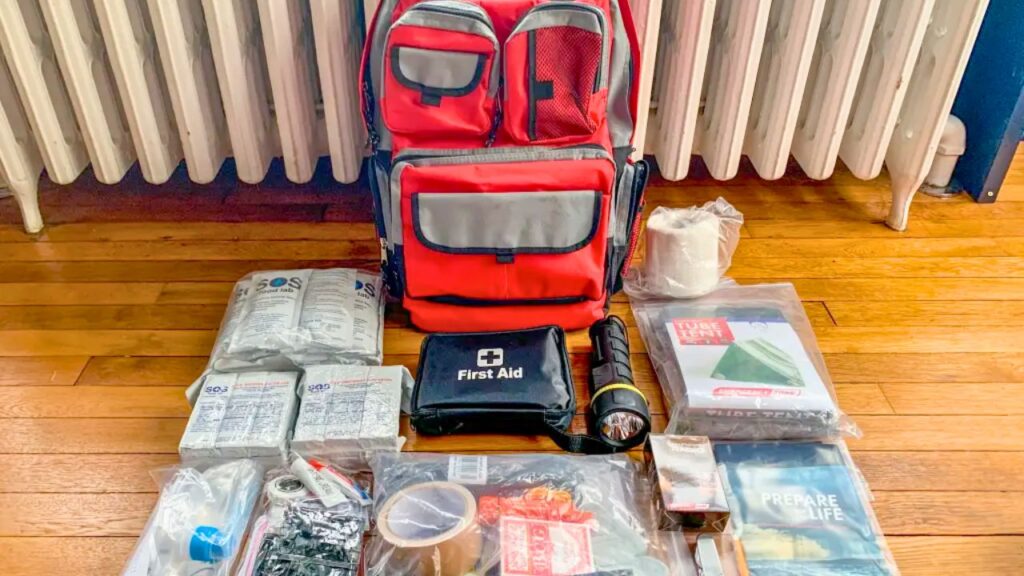
If you get stranded, especially in adverse weather conditions, having items to keep you warm, dry, and comfortable is essential.
Essential Warmth, Shelter, and Comfort Items:
- Blankets: Wool or thermal blankets to stay warm. Consider an insulated “outdoor” blanket for extra protection.
- Emergency Blanket (Mylar Blanket): Lightweight and compact, these blankets can reflect body heat and provide crucial warmth in cold conditions.
- Rain Jacket or Poncho: To stay dry in case of rain.
- Spare Shoes and Socks: Wet or uncomfortable footwear can be a significant problem.
- Hat and Gloves: Essential for retaining body heat in cold weather.
- Hand and Foot Warmers: Chemical heat packs can provide extra warmth in extreme cold.
- Small Shovel (Foldable): Particularly important if traveling in areas prone to snow or ice. It can be used to clear snow from around your tires or the exhaust pipe.
- Sun Protection: Sunglasses and sunscreen are essential, even on cloudy days, especially if you get stranded in a sunny location.
5. Food and Water
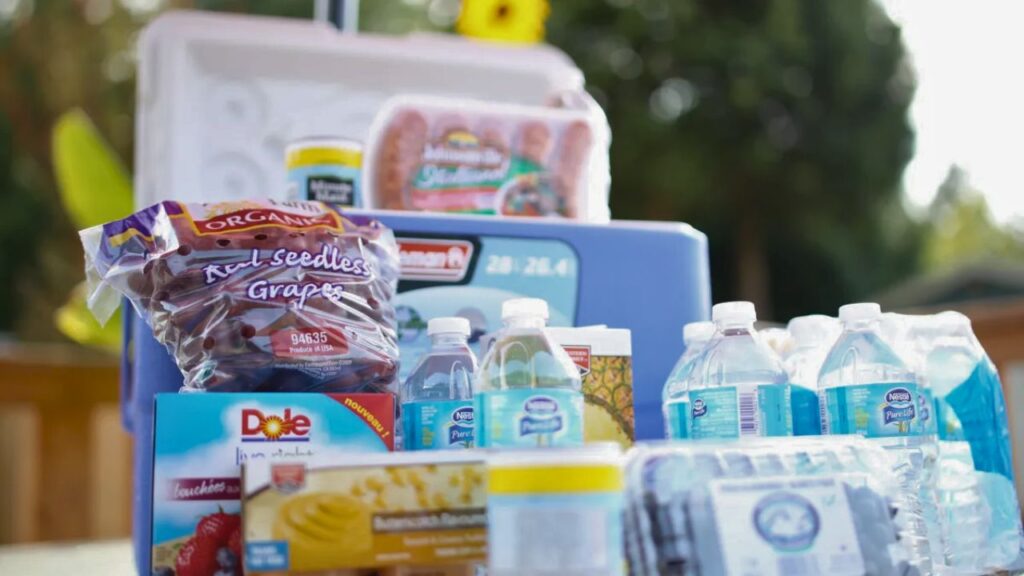
Having a supply of non-perishable food and water is vital, especially if you face a prolonged delay.
Essential Food and Water Supplies:
- Water: At least one gallon of water per person per day for drinking. Consider carrying extra, especially for longer trips or in hot climates. Smaller, individual bottles can be easier to manage.
- Non-Perishable Food: Energy bars, canned goods (with a manual can opener), dried fruit, nuts, and other non-spoilable food items. Aim for at least a day’s worth of food. Replace these items every six months to ensure freshness.
6. Miscellaneous Essential Items
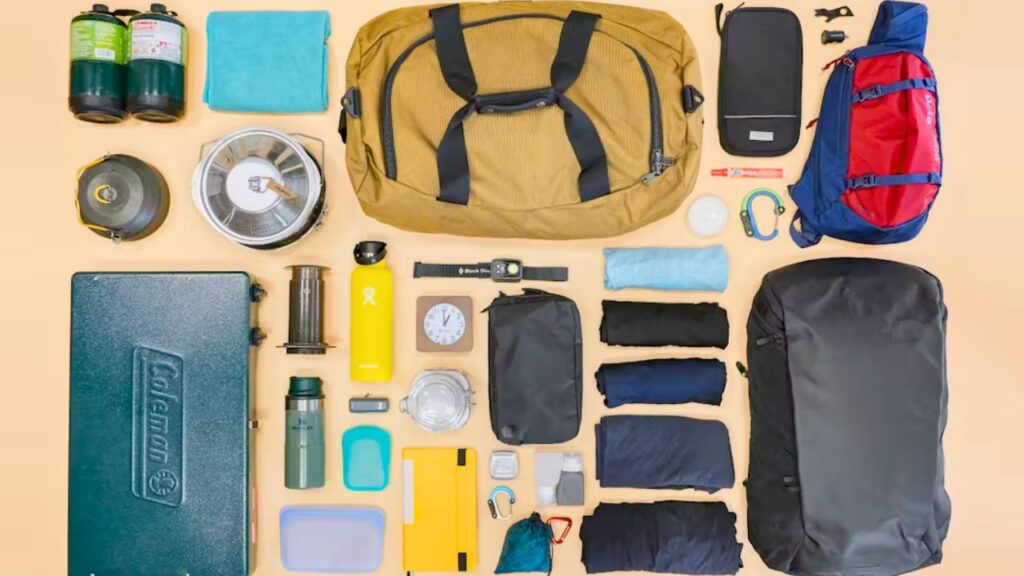
There are a few other items that don’t fit neatly into the above categories but are still crucial for your road trip emergency kit.
Miscellaneous Essential Items:
- Seatbelt Cutter Tool: A small tool that can quickly cut through a jammed seatbelt in an emergency. Consider one that also includes a window breaker.
- Fire Extinguisher: A small ABC-rated fire extinguisher designed for vehicles can be invaluable in case of a car fire. Ensure it is securely mounted and easily accessible.
- Cash: In case of situations where credit cards are not accepted or ATMs are unavailable.
- Copies of Important Documents: Keep copies of your driver’s license, vehicle registration, and insurance information in a safe place, separate from the originals.
- Medications: Any prescription or over-the-counter medications you regularly take.
- Sanitation and Hygiene Supplies: Hand sanitizer, antiseptic wipes, toilet paper, and trash bags.
- Cord or String: For various uses, such as securing items or creating a makeshift clothesline.
- Carabiner: A useful clip for attaching items.
- Water Purification Tablets: If your water supply runs out and you need to find a natural source.
- Compostable Baggies: For waste disposal.
- Notes on First Aid and Emergency Contacts: Keep a written list of important phone numbers and basic first-aid instructions readily available.
- Spare Cellphone Battery Pack: To ensure you can charge your phone even without access to a car charger.
- Ice Scraper and Snow Brush: Essential if traveling in winter conditions.
- Non-Clumping Kitty Litter or Sand: For providing traction if your tires get stuck in snow or ice.
Organizing Your Emergency Kit
The key to an effective emergency kit is not just what you pack, but also how you organize it.
- Use a Durable Container: A sturdy plastic bin or duffel bag is ideal for keeping your kit organized and protected.
- Keep it Accessible: Store your kit in a location that is easily reachable in case of an emergency, such as the trunk or under a seat. Avoid storing items loosely in the passenger compartment, as they can become projectiles in an accident.
- Separate Kits (Optional): You might consider having separate smaller kits for specific needs, such as a first-aid kit that is easily accessible from the passenger compartment and a larger kit with tools and other supplies in the trunk.
- Regularly Check and Restock: Make it a habit to check your emergency kit periodically. Replace any used or expired items, and ensure that batteries are charged and food supplies are fresh.
Tailoring Your Kit to Your Trip
While the items listed above provide a comprehensive foundation, you should also consider tailoring your emergency kit to the specific needs of your trip.
- Destination and Climate: If you are traveling to a very hot or cold region, adjust your clothing and supplies accordingly.
- Duration of the Trip: For longer trips, you might need to pack more food, water, and other essential supplies.
- Number of Passengers: Ensure you have enough supplies for everyone traveling with you, especially water and food.
- Remote Areas: If your trip involves traveling through remote areas with limited services, be sure to pack extra fuel, water, food, and communication devices.
- Specific Needs: Consider any specific needs of your travel companions, such as medications or baby supplies.
Conclusion
A well-stocked road trip emergency kit is an investment in your safety and well-being. By taking the time to assemble a comprehensive kit and keeping it well-maintained, you can significantly enhance your preparedness for unexpected events on the road. Remember to review and customize your kit based on your specific travel plans and the needs of your passengers. Safe travels!
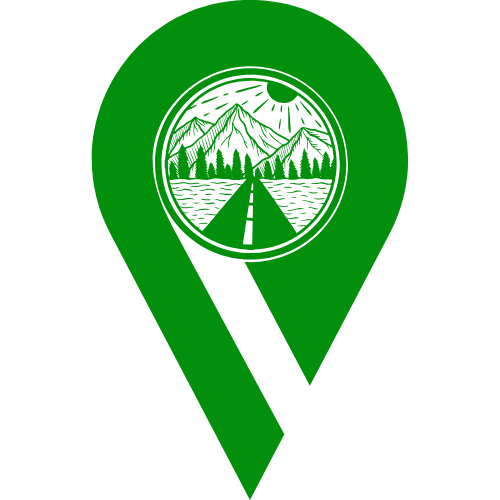
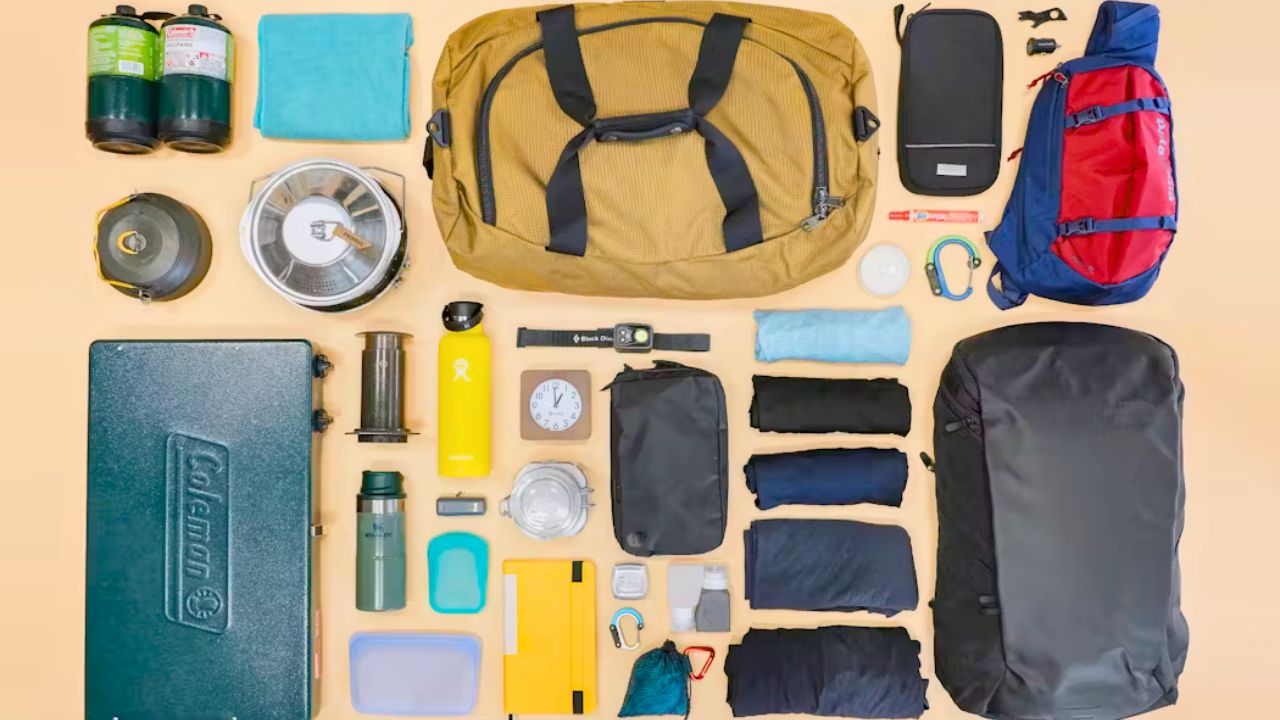
Leave a Reply